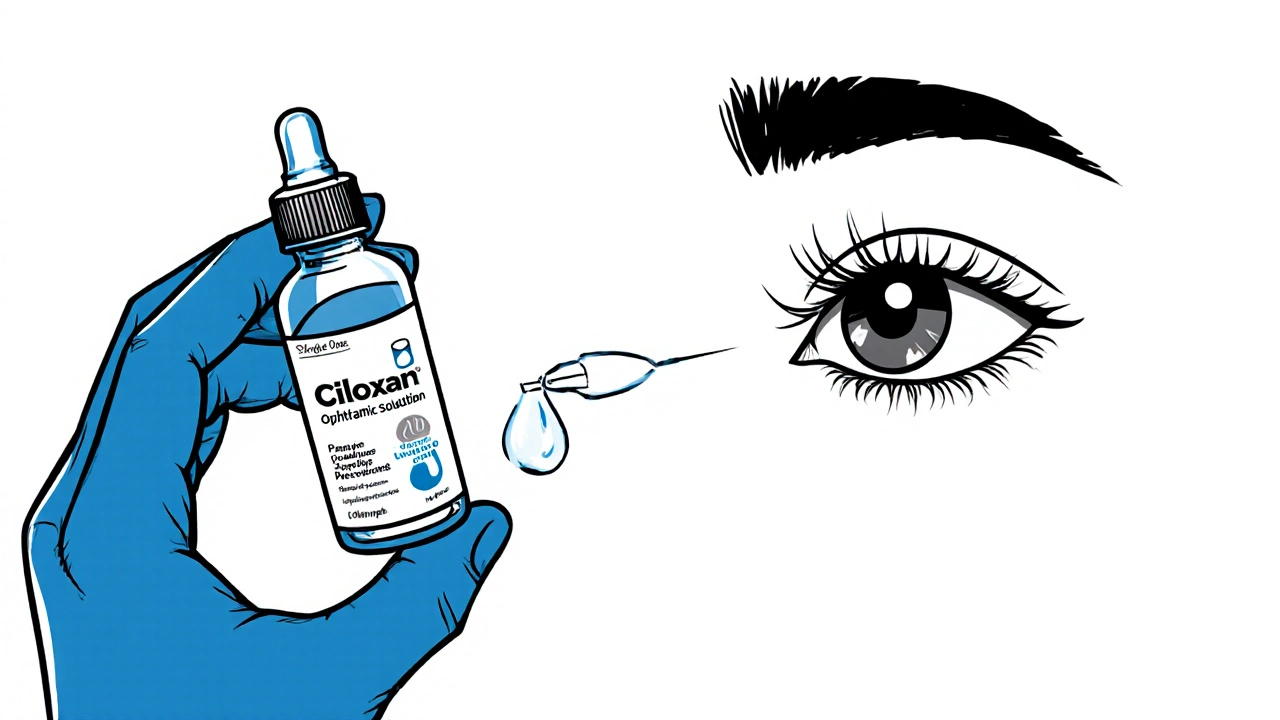A detailed, side‑by‑side comparison of Ciloxan (ciprofloxacin eye drops) with other ophthalmic antibiotics, covering usage, benefits, costs, and when to choose each option.
Eye Drop Antibiotics
When dealing with eye drop antibiotics, topical medicines used to fight bacterial eye infections. Also known as ophthalmic antibiotic solutions, they are the first line of defense against conditions like bacterial conjunctivitis, a common, highly contagious infection of the conjunctiva. These drops work by delivering the drug directly to the site of infection, which means faster relief and fewer systemic side effects compared with oral antibiotics.
There are several topical antibiotic formulations, including solutions, suspensions, and ointments designed for the eye. The most frequently prescribed agents are fluoroquinolones (like moxifloxacin), macrolides (such as erythromycin), and aminoglycosides (like tobramycin). Each class offers a different spectrum of activity: fluoroquinolones cover a broad range of gram‑negative and gram‑positive bacteria, while macrolides focus more on gram‑positive organisms. Choosing the right formulation often depends on the severity of the ocular infection, patient tolerance, and risk of resistance. For mild cases, an ointment can stay longer on the eye surface, but a solution may be preferable for rapid symptom relief.
Safety, Dosage, and Practical Tips
Proper use is key to avoiding resistance and achieving quick healing. Always wash your hands before handling the bottle, and avoid touching the tip to your eye or any surface. Most prescriptions recommend one to two drops every 2–4 hours for the first 24–48 hours, then tapering to 2–3 times daily until symptoms resolve. eye drop antibiotics should never be shared, and any leftover medication should be discarded after the expiration date to prevent contamination.
While many eye drop antibiotics require a prescription, some low‑strength formulations are available over the counter for minor irritations. However, self‑diagnosing can be risky; certain redness may stem from viral conjunctivitis or allergic reactions, which won’t respond to antibiotics and could worsen if misused. If you notice worsening pain, vision changes, or persistent discharge after a few days of treatment, contact a healthcare professional immediately. The right drug, combined with proper dosing, will clear bacterial infections fast and protect the delicate eye tissue.
Below you’ll find a curated list of articles that dive deeper into specific antibiotic eye drops, compare their effectiveness, and offer buying guides for safe online purchases. Whether you’re a patient looking for clear instructions or a caregiver seeking the best option for a loved one, the collection provides practical insights you can act on right away.
